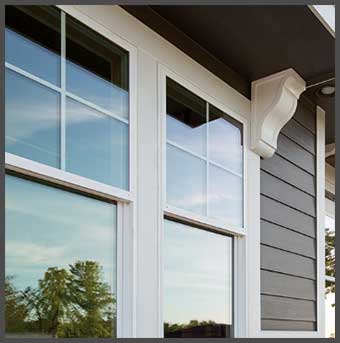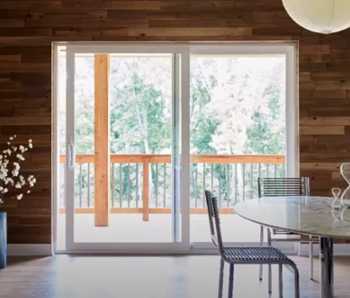When it comes to replacing your home’s windows, Pella is one of the most trusted and well-known brands on the market. As a company with over 90 years of experience, Pella has built a reputation for high-quality, energy-efficient windows in a range of styles.
Two of Pella’s most popular window lines are the Symphony and 250 series. Both offer exceptional performance, styling and customization options. However, there are some key differences between the two that you’ll want to understand before deciding which is right for your home.
In this comprehensive guide, we’ll compare the Pella Symphony and 250 series windows to highlight the pros and cons of each. We’ll cover factors like efficiency, design, cost and more so that you can make an informed decision for your replacement window project.
A Brief Comparison Table
| Factor | Pella Symphony | Pella 250 Series |
| Frame Material | Wood interior, fiberglass exterior | Vinyl |
| Energy Efficiency | Superior – U-Factors as low as 0.17 | Excellent – U-Factors around 0.19 |
| Sound Transmission | Excellent – STC ratings up to 47 | Good – STC ratings up to 36 |
| Design Options | Extensive customization available | Good customization available |
| Cost | 25-50% premium over 250 series | More affordable than Symphony |
| Durability | Extremely durable and long-lasting | Durable and long-lasting |
| Warranty | Limited lifetime warranty | 10 year warranty |
Pella Symphony Windows Overview
Pella describes their Symphony line as their best performing, most customizable wood window. Symphony windows feature a wood interior and fiberglass exterior, combining the aesthetic of wood on the inside with the durability and low-maintenance of fiberglass on the outside.
Here are some of the key features and benefits of Pella Symphony windows:

- High Energy Efficiency: Symphony windows can achieve ENERGY STAR certification in all 50 states with triple pane glass and argon gas. This makes them an excellent choice for cold climates.
- Superior Sound Control: With advanced glazing and engineering, Symphony windows block outside noise extremely well. This is great if highway or other outdoor noises bother you.
- Custom Styling: Choose from dozens of interior and exterior finishes, hardware options, art glass and more. Symphony windows are made to match your home’s character.
- Durability: The fiberglass exterior requires no painting and resists rotting, warping and damage from moisture. Symphony windows are built to last.
- Enhanced Security: Multi-point locking hardware creates a tighter seal and improves protection against forced entry.
Overall, the Pella Symphony line offers the highest performance and most custom options among Pella wood windows. The blend of wood and fiberglass gives you the best of both materials.
Pella 250 Series Windows Overview
Pella’s 250 series is their mid-range vinyl window line. Vinyl windows have surged in popularity in recent years thanks to their affordability, energy-efficiency and low-maintenance.
Here are some of the key highlights of Pella 250 series vinyl windows:

- Budget-Friendly Pricing: Vinyl windows are more affordable than wood or fiberglass, making the 250 series a reasonably priced option.
- Low-Maintenance: The vinyl frame requires no painting or staining, keeping maintenance needs to a minimum.
- Energy Efficient: 250 series windows are available with triple-pane glass and argon gas fill for optimal thermal performance.
- Customization: Choose from a range of interior and exterior color options, hardware styles and glass types.
- Strength: Pella 250 series windows are made with a multi-chamber PVC frame for enhanced structural stability.
- Weather Resistance: Vinyl holds up well against rain, snow, sun and temperature swings compared to wood.
Overall, the 250 series hits the sweet spot of performance, aesthetics and value. The vinyl construction makes the windows durable and energy efficient at an affordable price point compared to wood and fiberglass options.
Key Differences Between Symphony And 250 Series Windows
Now that we’ve highlighted what each window line offers, let’s do a side-by-side comparison of some of the most important factors:
Energy Efficiency
Both Symphony and 250 series windows can be configured to meet ENERGY STAR requirements. However, Symphony may have a slight performance edge in northern regions with extreme winters.
- Symphony windows with triple pane glass can achieve U-Factors as low as 0.17 to 0.20 with argon fill and high-performance LoE3 glass coatings. This surpasses the northern zone ENERGY STAR requirement of 0.27.
- 250 series windows with triple pane glass and LoE glass also achieve impressively low U-Factors around 0.19 to 0.22. However, the fiberglass exterior of Symphony windows provides incrementally better insulation.
So when it comes to thermal performance, Symphony windows edge out the 250 series by a slim margin. But both window lines still achieve excellent energy efficiency overall.
Sound Transmission
When comparing sound control and noise reduction, Symphony windows are the clear winner.
- Symphony windows have an STC rating as high as 47, significantly reducing outside noise. This is attributed to the window’s superior glass, sealants and construction.
- 250 series windows still block sound reasonably well for a vinyl product. However, their maximum STC rating is 36, which doesn’t match Symphony’s sound dampening capabilities.
If blocking noise is one of your top priorities, Symphony windows provide a major advantage. But for many homeowners, the 250 series offers sufficient sound control.
Design and Style
Both Symphony and 250 series windows come in a wide range of styles with ample customization options.
Symphony’s wood interior gives them a classic, elegant look that vinyl cannot quite match. And you have more choices for finishes, hardware and art glass to match your home’s aesthetics. Overall, Symphony offers superior design flexibility.
However, 250 series windows still look great. The vinyl frames mimic wood grain very convincingly. And you get several color choices for the interior and exterior. For many homes, the appearance and styling possibilities of the 250 series will be more than sufficient.
So Symphony wins on design flexibility, but both window lines offer attractive styling. It comes down to your personal taste and budget.
Cost and Value
As you might expect, Symphony windows come at a higher price point than the 250 series. On average, Symphony windows will cost 25-50% more than 250 series windows of similar size and configuration.
However, Symphony windows provide significant added value through their best-in-class efficiency, noise reduction, and design options. For homeowners wanting the best possible performing wood window, the higher cost of Symphony windows is justified.
250 series windows offer an outstanding value. You get excellent energy savings, weather protection and design at a price far below wood windows. For many homes, 250 series windows make sense to get high performance vinyl windows on a budget.
Ultimately the importance you place on key factors like acoustics, aesthetics, and maximum energy savings will determine whether Symphony or 250 series is the better investment for your replacement window project.
Durability and Longevity
When it comes to durability, vinyl, wood and fiberglass all have unique strength and weaknesses.
Vinyl holds up incredibly well against moisture, rotting, warping and temperature swings. And 250 series windows are built with a rigid multi-chamber PVC frame for enhanced structural stability. Fiberglass is also highly resistant to moisture and temperature changes compared to wood.
However, wood framed windows like Symphony do have the edge for long term durability when properly maintained. The thick interior wood construction makes Symphony windows very rigid and long-lasting when protected from moisture.
Overall, Symphony probably edges out 250 series windows slightly in true longevity. But both product lines are engineered to last for decades when installed properly.
Key Takeaways
To summarize the key differences:
- Performance: Symphony windows are more energy efficient and provide superior noise reduction.
- Design: Symphony offers greater customization and a classic wood interior look.
- Cost: Symphony windows come at a 25-50% premium over 250 series.
- Value: 250 series provides impressive performance for the money; Symphony is a premium product.
- Durability: Symphony may last slightly longer, but both window lines are very durable.
For many homes, Pella 250 series vinyl windows present an outstanding combination of efficiency, quality, durability and value. Their affordable price point makes them attractive for homeowners on a budget.
For those wanting the ultimate in acoustics, aesthetics and cold weather efficiency, Symphony windows justify their higher cost. Their blend of wood and fiberglass is hard to match.
Ultimately, the needs of your home and your budget will determine whether Pella Symphony or 250 series is the better choice. Carefully prioritize the factors most important to you as you evaluate both excellent Pella window lines.
Frequently Asked Questions (FAQ)
Still have some questions about Pella Symphony and 250 series windows? Here we’ve compiled answers to some of the most frequently asked questions:
Pella has three main product lines or price tiers:
Designer Series: Pella’s highest end wood, fiberglass and vinyl windows with the best performance and most options. Includes the Symphony, Architect Series and Encompass lines.
Architect Series: Pella’s mid-range line with vinyl, fiberglass or aluminum-clad wood frames. Affordable with competitive efficiency. Includes the 250 series.
Contractor Series: Pella’s value vinyl windows focused on cost and basic performance rather than luxury features. An entry-level choice.
Yes, 250 series windows can be very energy-efficient, especially when configured with triple pane glass and advanced LoE3 coatings. U-Factors as low as 0.19 are possible, surpassing ENERGY STAR requirements in any climate zone.
Pella windows are typically 10-15% less expensive than comparable Andersen windows. Both companies make premium windows, but Pella’s pricing is usually a bit more affordable. The cost difference depends on the specific lines and models being compared.
For a typical double-hung window measuring 36” x 60”, expect to pay $450 – $650 for a Pella 250 series window installed. Larger windows, specialty shapes or premium options will increase costs. Get a free estimate to know the exact installed price for your home.
Final Remarks
We hope this detailed comparison of Pella Symphony and 250 series windows helps you select the ideal choice for your replacement or new construction project!
Reach out to a Pella representative if you have any other questions.
